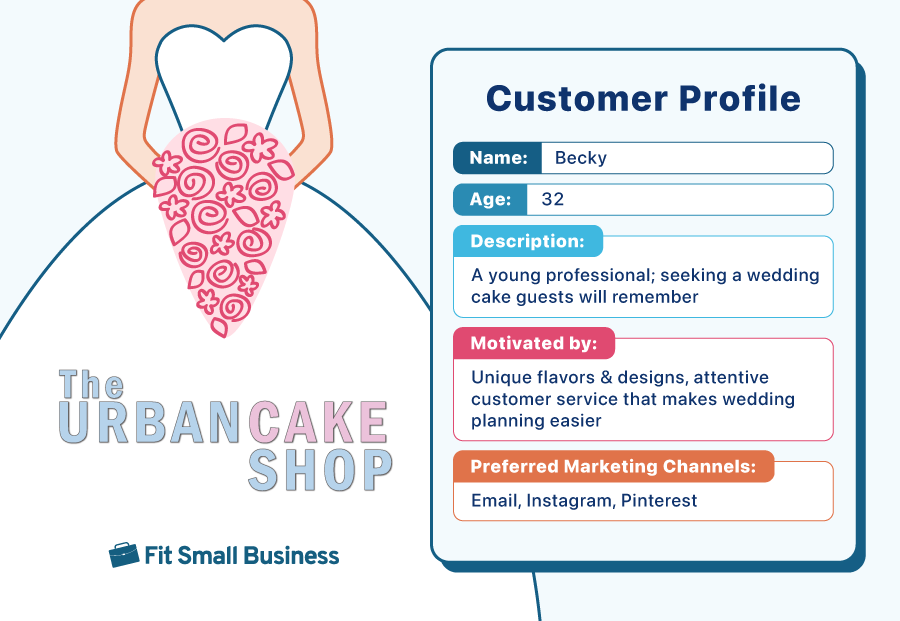Thinking about starting a small business from home? You’re in good company. Half of all small businesses begin in the home. Some of the most notable are Microsoft and Amazon, but hundreds of thousands of small-business owners are able to make a living working from their own house. They do it to be their own boss, achieve better work/life balance, and make their interests work for them.
We cover how to start a business from home in 10 steps. Some take some work and deep thought; put that effort in now to ensure a greater chance at success later.

Most people choose to start a home business to be their own boss and work on their own terms. (Photo: Pixabay)
Step 1: Find a Winning Business Idea
If you’ve already done this, excellent! Move on to testing your idea on the market. If not, however, you’ll want to take stock of your skills and interests and match them against business models that work from home.
The possibilities are limited only by your imagination. People have made profitable businesses doing everything from website design to furniture reclamation to being a professional friend. Here are a few just to get you started:
- Dropshipping
- Handcrafted items
- Consulting
- Bookkeeping
- Coaching
- IT/website development
- Services—home business does not mean being stuck in the home—like pet care or landscaping
- Upscaling/Reclaiming
Another good way to brainstorm is to start with what you know and are good at. Think back to the skills you’ve developed in school or at other jobs. Are any of those skills something that you can offer to multiple people or companies? Say, for example, you were a secretary at a small company. Your duties might have been:
- Social media campaign
- Newsletter creation
- Event organization
- Creating and maintaining a filing system
- Overseeing project progress
- Keeping the boss organized and on time
You could start a home business from any of those skills alone, or you could offer yourself as a virtual assistant and do a few of these for multiple clients.
For more suggestions and information, check out our articles:
- How to Come Up With a Business Idea
- How to Choose a Business to Start
- Best Business Ideas to Make Money
- Crazy Business Ideas for Entrepreneurs
Can your business idea be run from home?
As you consider ideas, think about how this business will fit into your home life. Do you have the space? The time for the projects? What safety considerations are there (consider your children—can you keep them away from the chemicals and tools for the home business?). Finally, consider if there are any regulations that prohibit you from doing the kind of business you want in a residential area.
Step 2: Conduct Market Research
Only 2% of people start a business at home because they saw a need in the market. The majority are pursuing their passions. That said, if you don’t have customers, you don’t have a business. Thus, doing market research before you start can save you some heartache. Here are some quick steps:
- Identify your target market: This is the general group of people who will be interested in your product: CEOs of small businesses, indie bookstores, upper-middle-class homeowners, busy parents, people with clogged sinks.
- Create your customer persona: Now, you go deep. Imagine your perfect customer: their age, gender, personality and preferences, pain points, reasons they’d need your product, and where you’ll find them. You can make several of these for each type of customer you’ll target. You’ll keep these personas in mind when doing your marketing and advertising.

The more detailed your customer profile is, the more personally you can reach them in advertising.
- Identify your competitors: These are the businesses that offer the same kinds of products in your area (whether local or online). You can do an internet search, check with your local chamber of commerce, consult Yelp or other business review sites, and look at ads in your local paper. (Once you start digging in, chances are that ads for competing businesses will also show up on your social media.)
- Compare your competitors: Once you’ve identified them, you need to see how your competitors stack up against what you can offer. This can help you find your niche as well.
- Check the market saturation: Before you go any further, ask yourself the big question: Do customers already have enough choices? You are less likely to succeed in starting a business from home if the market is already saturated. Look at the number of competitors vs the number of people interested in your demographics. You might also look at success rates for your type of business and consumer trends for your product or service.
Step 3: Define Your Unique Value Proposition
As you researched the market and competitors, you should have gotten a good feel for what people want vs what everyone else provides. You may have even seen what you can do differently. Now, you need to clarify that into a unique value proposition. This is something you can do better, faster, cheaper, or in a way that no one else is doing that will appeal to your customer profiles. Don’t forget that you personally can be part of the value proposition.
Some examples:
- Hair styling in their home vs at the shop
- Custom desserts where the customer chooses the ingredients
- Custom training videos narrated by a professional comedian (you)
- Refurbished antique furniture at mid-ranged prices
- IT solutions that include one-on-one training at a cheaper price point than most large companies
- DIY marketing consultations
Step 4: Test Your Home Business Idea
A key step in how to start a small business at home is testing the waters. This gives you a low-investment chance to make sure your product works, your target customer will like it, and that you will enjoy the work yourself.
When testing your product, aim for your ideal customer rather than family or friends, who may be biased toward praise. This may take some advertising and time but is worth it in the long run. Here are some ideas:
- Offer freebies: Consider offering your service or product free to influential clients in your target market. Be sure they understand you are looking for an honest review. This gets you publicity and builds your portfolio. If there are issues, you can learn from your mistakes.
- Do a Beta Run: Beta runs are most often seen in software, where a new product or version is offered to a select group to get feedback. In this case, you’re offering your product or service to a select group of people to get their feedback. You can do this as a free service or at a reduced price.
- Use the “fail fast” method: This philosophy of business encourages the rapid release of products so that you can learn from your mistakes, improve quickly, and continue on. It can be a risky venture, but many companies have used it successfully. If you want to start a home-based business but aren’t fully sure exactly what you want to do, this can be a quick way to discover a passion that works.
- Work part time: You don’t have to quit your day job to start a business at home. Work it part-time while using your current job to pay the bills. Then as you grow, you can transition.
- Crowdfund: This is a great way to test the market and raise funds for your business. Learn more in our article on how to crowdfund your business and our article on the best crowdfunding sites for more.
Step 5: Create Your Budget
You’ve probably spent or raised some money while testing the waters, but now is the time to create a budget to get your business officially off the ground. The Small Business Administration estimates that you can start a micro business for as little as $3,000, or possibly even less. However, this statistic comes from 2018—pre-COVID-19 and the subsequent inflation. Other statistics say it can run from $5,000 to $40,000 for the first year. The SBA offers a spreadsheet to help you calculate costs.
Here are some expenses you can expect:
- Computers: $1,000–$5,000
- Internet and communications: $80/month for internet
- Website or online store: $30–$200/month, plus development ($5,000–$15,000) if you hire out
- Advertising: Usually by pay-per-click with you setting daily limits
- Supplies: Varies by business
- Tools: Varies by business
- Software: Might include point-of-sale software, inventory software, or programs specific to the services you provide
- Labor: $7.25–$15+ Check your state or local minimum wage
- Storage: Varies by business
- Shipping or transportation: Varies by business
- Business insurance: Depending on the business, you might need general liability, property, transportation, or (if hiring employees) disability and unemployment insurance
Next, create a financial projection of expenses and potential profits over the next three years. Not only does this help you know what to expect (like can you really quit your day job?) but is also needed for Step 6 below.
Check out our article on how to create a small business budget and our free templates for sales projections.

Whether you’re a dog walker or starting your own line of handbags, you should plan a budget for your business. (Photo: Pixabay)
Step 6: Write a Business Plan
A business plan lays out all the important aspects of your business: product or service, market, budget, advertising strategy, and management. The good news is, that you’ve already done most of the work! We have an article that details how to create your business plan in seven easy steps. You can also find a lot of small business organizations and even some nonprofits that are glad to help you with this phase of your journey.
A business plan is vital if you are looking for funding. It can help you with advertising, too. Plus, it makes your business clear in your mind.
Step 7: Handle the Legalities
An important step in how to start a small business at home is to take care of all the legalities. Working from your house does not exempt you from certain state and federal regulations, and indeed, there may be some restrictions on what you can do in a residential area.
- Check zoning: Before you officially start a small business from home, consult your local zoning office about what you can and can’t do. For example, you may be able to restore classic cars in your garage as a hobby but not as a business.
- Check health code regulations: If you are dealing with food especially, there may be health code regulations you need to follow even in your own kitchen.
- Check if you need liability insurance: You may be required to have this kind of insurance if working in people’s homes, for instance.
- Check employment laws: If you plan to start a home-based business that includes employees, then you need to know the applicable labor laws.
- Get a home occupation permit: Starting a business from home that includes employees, product creation, or customers coming to your home can affect the neighborhood. In this case, you may need this permit that shows you are not adding significant traffic, noise, or harmful environmental conditions to your area.
Get a Business License
Registering your business with the state is vital for tax and legal purposes. There are several kinds of licenses. Visit the Small Business Administration website for an explanation of the different types. Here is a general list with pros and cons:
Business Entity Type | Requirements | Pros & Cons |
|---|---|---|
Sole proprietorship |
| Easy to set up and run, but you're personally responsible for all business debts and liabilities |
Limited liability corporation (LLC) |
| You are not personally responsible for business debt and liabilities and it’s less formal than S or C corps, but it’s more expensive to start than a sole proprietorship and requires annual state registration |
C-Corporation |
| You are not personally responsible for business debt and liabilities and have more tax deductions, but it’s more expensive and has more requirements and tax considerations |
S Corporation |
| You are not personally responsible for business debt and liabilities and only pay taxes on the money you earn from your business, but it's more expensive to register and the tax rules are more complex. It’s used when you have shareholders |
Learn more in our guide comparing LLC vs S-corp vs C-corp.
Get your Employer Identification Number (EIN)
You need a federal EIN if you have employees or make sales where you pay taxes. It’s easy to do. Once you have your license, file a form SS-4. If you are a sole proprietor, you don’t need this; just use your Social Security number instead.
Step 8: Set Up Your Business Finances
It’s important to keep business finances separate from personal ones. It helps with taxes and can keep you from feeding too much personal money into your business. Even if you are starting a home business as a sole proprietor, having separate accounts, credit cards, and financial tracking will get you started on the right foot for when your business grows.
- Business Bank Account: You definitely should have a business checking account, but a business savings account or Business Certificates of Deposit account are great ideas for putting away money for the future or emergencies. In some cases, you might be able to open one up with your personal bank, even as a personal account under your company name. However, many business accounts come with benefits. Keep an eye out for bank fees, minimum balances, and other “gotchas” that can hurt your profit.
- Business Credit Card: Having a separate credit card for small or sudden business expenses keeps the debt off your personal credit score (unless you’re a sole proprietor) and makes it easy to see where your business funds are going. At the very least, have a separate card for this purpose. See options in our roundup of top-recommended small business credit cards.
Step 9: Finance Your Home Business
Most entrepreneurs who start a home-based business get the seed funds from their personal finances. However, that is not your only option. Here are some ways you can get others to fund your business for you. Hint: Here’s where all the work on the business plan pays off!
- Ask friends and family: This is a personal choice, but according to Lendio, 12% of SMB owners sought funds from friends and family. If you do this, it’s a good idea to have some legal paperwork to define terms of repayment or ownership if you offer part of your business in return.
- Peer-to-peer lending: P2P platforms match investors and businesses for small business loans. You’ll pay interest on these, but can generally get funds quickly.
- Crowdfunding: We mentioned this earlier when testing your market, but you can create crowdfunding campaigns for expansion as well as starting a business from home.
- Use credit cards: These generally have higher interest than other avenues, but are a quick solution for fast purchases. If you find a credit card with 0% interest for the first year, however, this could be a sound solution.
- Rollover your retirement funds into the business: If you are a C-Corp, a Rollover for Business Startups (ROBS) lets you invest retirement funds in a new business without paying taxes or early withdrawal penalties. It can cost up to $4,000 in setup fees and you need at least $50,000 in your retirement account to qualify.
- Apply for an SBA loan: While the Small Business Administration has loan guarantee programs, it’s hard for a home business just starting to get one. To qualify for an SBA loan, your credit score must be above 680, and you need to be able to put up collateral for the loan like real estate property. If you qualify, you can borrow up to $250,000 but expect to pay an annual interest rate of 6% to 9%. They generally only guarantee loans to businesses that have been running for a few years. Microloans (under $50,000) are your best bet here. Check with your bank or one of the best banks for small business loans.
Step 10: Set Up Your Space
This may be the most fun, but it can also be time-consuming. Your space includes both physical and online presence; a working area, an office area, and even signage in your yard. It may even include home vs work scheduling. Here are some tips on how to start a home business environment:
- Plan for separation: It can get frustrating when the business papers get mixed in with the kids’ homework, so make an area that is truly designated just for your business. At its simplest, it can be a file box where the office paperwork and supplies are left, or you might have a room just for work. (In that case, you can get a tax break on that room!) The same thing goes for supplies, especially for baking or crafting. This also helps you track consumption and helps ensure items are not misused or contaminated.
- Create your online presence: The easiest way to make yourself known is with a website. It does not have to be complex—even a simple page with who you are, what you provide, and contact information can work, but be sure it looks professional and is optimized for search so people can find you easily. You should also have a social media presence dedicated to your business that is separate from your personal accounts. Use it only for business promotion, although you can post on-brand memes and casual posts.
- Decorate on-brand: If your space will be open to customers, it’s important that it feels like your business and not just another part of your home. Consider decorating for the impression you want to make on your customer: are you all about efficiency? Relaxation? Coziness? Think, too, about your brand colors. Have your logo on the wall where it can be seen. A separate entrance can add safety as well as separation.
- Be seen, but be subtle: If you are bringing customers to your home, you need to have signage so they know they’re in the right place. However, check with your city and HOA rules, and regardless, be tasteful in your choice of signage.

Your home office should be where you can concentrate on work. (Source: Pixabay)
Want to learn more? Check out our article on how to start a small business.
Frequently Asked Questions (FAQs)
These are some of the most common questions about starting a business from home.
There are a couple of different options to start a business if you have no money. Offer services that don’t cost you anything: What skills, software, or tools do you already have? If you have a full set of tools, a handyman business is low-cost. If you already own a computer and have good coding skills, then perhaps website design is for you. Otherwise, scroll up for our list of suggestions to get funding for your business.
Service-based businesses tend to be the most profitable. Here are some examples of the most popular:
- Cleaning businesses
- Personal trainers
- Mobile apps (especially for children)
- Newborn and post-pregnancy services
- Virtual assistants
- Doggy daycare
These depend on the type of business and its location (city, state). You can start a home-based business without any limitations. However, we recommend all businesses file as a legal entity with the state in which they will be operating. This protects the business owner’s personal assets if a lawsuit were to occur against the business.
In addition to registering the business as a legal entity, your state may require a certain license, for example, a cosmetology license if you’re styling hair in your home. Additionally, if you’re seeing customers in your home, you may need an at-home business license issued by your city.
This may vary by location. In Los Angeles, for example, you can only have one employee who does not live in the home.
Bottom Line
Working for yourself can be exciting and relaxing, but unless you know how to start a home business, you can be in for a world of frustration. The 10 steps we provide give you a good foundation, but do your homework! The more care you put into the first steps, the easier it will be for your new business to take off and grow.